The price is available ON REQUEST
Even as stem cell therapy can not guarantee a cure for many diseases, the objective is to enable the body to mend itself adequately enough to alleviate symptoms for extended periods of time. In several instances, this effect can significantly improve patients' quality of life while also delaying disease progression.
Sources of Stem Cells
Stem cells are available from a variety of origins. Adipose (fat tissue), umbilical cord tissue, placental tissue, umbilical cord blood, and bone marrow are examples of these.
Way of Administering Stem Cells
IV Stem Cell Therapy (intravenous administration), Intrathecal (straight into the spinal canal), and site injections into problem areas are all options for delivering stem cells (Knee, hips, hands, etc.)
Stem cell treatment, also known as regenerative medicine, uses stem cells or related derivatives to promote the repair response of sick, dysfunctional, or wounded tissue. It's the next step in organ transplantation, and it relies on cells rather than donor organs, which are in short supply.
In a lab, scientists cultivate stem cells. These stem cells are programmed to differentiate into certain cell types, such as heart muscle cells, blood cells, or nerve cells.
Following that, the specialized cells can be put into a person. If a person has cardiac disease, for example, the cells might be injected into the heart muscle. The strong heart muscle cells that were transplanted can then help to repair damaged heart muscle.
Adult bone marrow cells led to becoming heart-like cells have previously been shown to mend heart tissue in people, and further study is underway.
Stem cells are the raw materials of our bodies — these are the cells that give rise to those cells with specific roles. Adult stem cells with self-renewal, immunomodulatory, anti-inflammatory, signaling, and differentiation capabilities are known as mesenchymal stem cells. The capacity of mesenchymal stem cells (MSCs) to proliferate and develop into various specialized cell types found in a certain tissue or organ is known as self-renewal capacity.
Adipose tissue (fat), bone marrow, umbilical cord tissue, blood, liver, tooth pulp, and skin are all good sources of mesenchymal stem cells (MSCs).
Because of their self-renewable, differentiation, anti-inflammatory, and immunomodulatory capabilities, MSCs are frequently used in the treatment of a variety of illnesses. In-vitro (in a lab setting) and in-vivo (in a living organism) studies have aided in the knowledge of MSC therapy's mechanics, safety, and effectiveness in clinical applications.
In a human body, a stem cell can differentiate into a variety of cell types. Differentiation is the process of stem cells growing into various cell types. This is the most important part of stem cell therapy since the cells transform into the cells that the body needs to repair.
Stem cells also have the potential to self-replicate, which means they can proliferate into exact replicas of themselves. For example, if stem cells were utilized to heal neurological damage, the cells given to the patient during treatment may transform into nerve cells, which would then reproduce to make an exponentially larger number of nerve cells on their own. As time passes, this ability to reproduce dramatically improves the efficacy of stem cell therapy.
Time required for Stem Cell Therapy to Work
There is also no evidence that any stem cell therapy given by clinics is effective or safe. Non-approved treatments marketed directly to patients are designed and performed with little monitoring, unlike FDA-approved procedures, which are subjected to years of rigorous testing. While stem cell clinics frequently highlight client testimonials, no large-scale clinical investigation has ever been conducted to show that the important advantages of stem cell therapy are not really the consequence of a placebo effect. The FDA has moved to tighten restrictions and enforcement of these clinics in current history. We now know a lot more about the success of blood stem cell transplants due to decades of research. We also understand that they are not cures-alls. While the operation itself is only a few hours long, the recuperation period can span weeks. During this time, physicians and nurses actively evaluate patients for adverse effects and signs of recovery.
A stem cell transplant for cancer patients aims to extend the life and, in some cases, even cure the disease. However, cancer may return in some circumstances (at times known as relapse or recurrence depending on its time of occurrence after a transplant). Relapse or recurrence can occur anywhere from months to years following the transplant. It occurs significantly less frequently 5 or more years following transplantation.
The stem cell therapy cost is determined by the injections' number and the treatment's intricacy. A single injection of stem cells might cost anything from US$ 1,000 to US$ 6,000. Multiple injections may be required in some patients, bringing the total cost of treatment to US$25,000 or plus.
Treatment cost
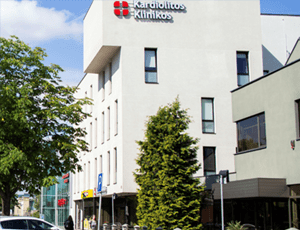
Apart from in-detail treatment procedures available, Kardiolita Hospital, Kaunas located in Kaunas, Lithuania has a wide variety of facilities available for International Patients. Some of the facilities which are provided by them are Accommodation, Airport Transfer, Choice of Meals. Also listed below are some of the most prominent infrastructural details:
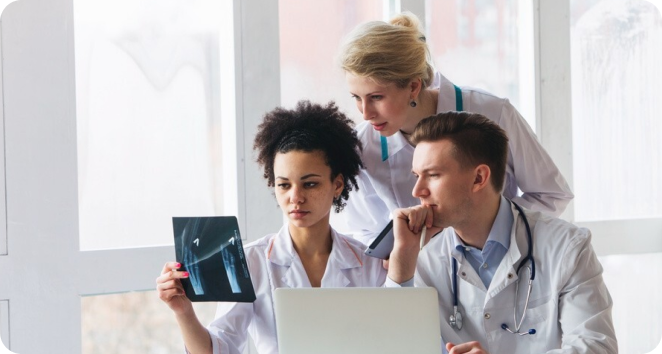
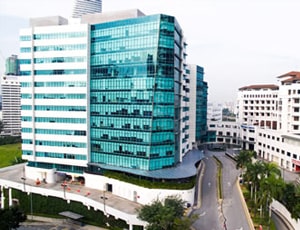
Parkway Pantai located in Kuala Lumpur, Malaysia is accredited by JCI. Also listed below are some of the most prominent infrastructural details:
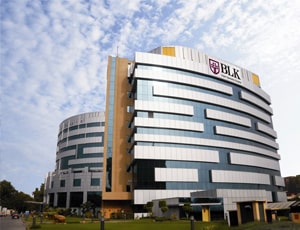
BLK-Max Super Speciality Hospital located in New Delhi, India is accredited by NABL. Also listed below are some of the most prominent infrastructural details:
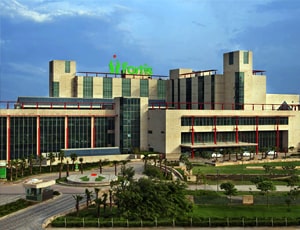
Fortis Memorial Research Institute located in Gurugram, India is accredited by JCI, NABH. Also listed below are some of the most prominent infrastructural details:
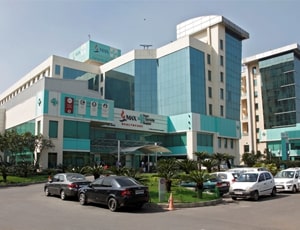
Max Super Speciality Hospital is a multi- super speciality intensive care centre, which has an excellent team of doctors, most advanced infrastructure of global standards in services and diagnosis, best practices for treatment, and the latest technology of machinery.
Infrastructure & Facilities:
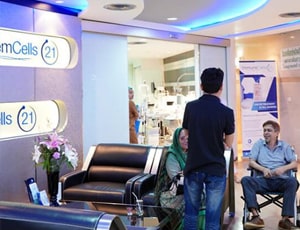
Types of Stem Cell Therapy in StemCells 21 and its associated cost
| Treatment Option | Approximate Cost Range (USD) | Approximate Cost Range (THB) |
|---|---|---|
| Overall Stem Cell Therapy Cost | 11207 - 17173 | 392896 - 605363 |
| Autologous Stem Cell Therapy | 7976 - 13675 | 279241 - 483857 |
| Allogeneic Stem Cell Therapy | 11085 - 17226 | 407195 - 613878 |
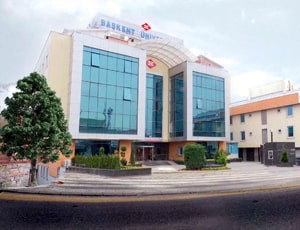
Types of Stem Cell Therapy in Baskent University Istanbul Hospital and its associated cost
| Treatment Option | Approximate Cost Range (USD) | Approximate Cost Range (TRY) |
|---|---|---|
| Overall Stem Cell Therapy Cost | 7983 - 13737 | 241112 - 404790 |
| Autologous Stem Cell Therapy | 5513 - 9098 | 167198 - 271119 |
| Allogeneic Stem Cell Therapy | 7788 - 13648 | 237398 - 410567 |
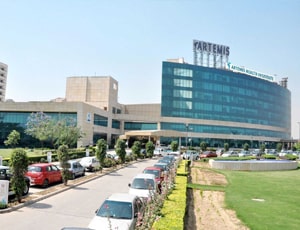
Types of Stem Cell Therapy in Artemis Health Institute and its associated cost
| Treatment Option | Approximate Cost Range (USD) | Approximate Cost Range (INR) |
|---|---|---|
| Overall Stem Cell Therapy Cost | 5749 - 9106 | 466374 - 728941 |
| Autologous Stem Cell Therapy | 3430 - 5613 | 278685 - 469044 |
| Allogeneic Stem Cell Therapy | 5544 - 9059 | 458870 - 748143 |
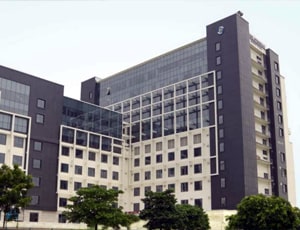
Types of Stem Cell Therapy in Venkateshwar Hospital and its associated cost
| Treatment Option | Approximate Cost Range (USD) | Approximate Cost Range (INR) |
|---|---|---|
| Overall Stem Cell Therapy Cost | 5068 - 8140 | 416958 - 663624 |
| Autologous Stem Cell Therapy | 3056 - 5081 | 250605 - 415336 |
| Allogeneic Stem Cell Therapy | 5058 - 8123 | 417887 - 663458 |
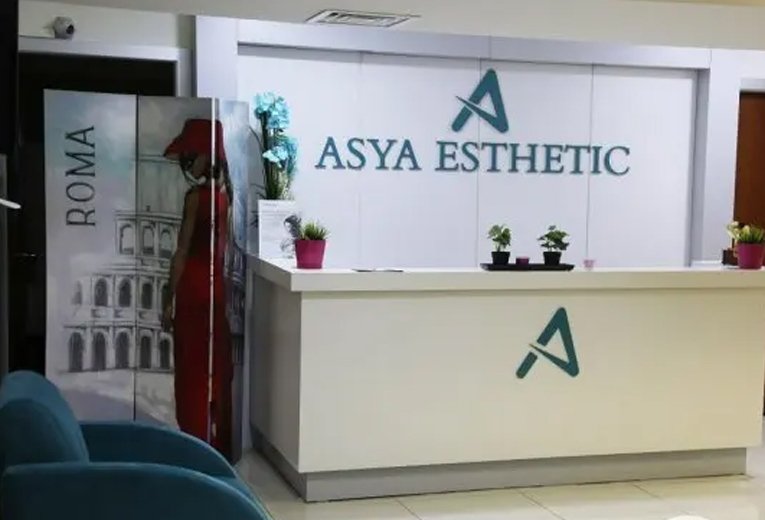
Types of Stem Cell Therapy in Asya Hospital and its associated cost
| Treatment Option | Approximate Cost Range (USD) | Approximate Cost Range (TRY) |
|---|---|---|
| Overall Stem Cell Therapy Cost | 7092 - 12175 | 214888 - 366872 |
| Autologous Stem Cell Therapy | 5063 - 8094 | 152994 - 244524 |
| Allogeneic Stem Cell Therapy | 7102 - 12154 | 214555 - 367570 |
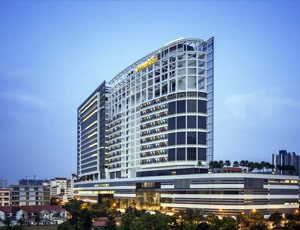
Apart from in-detail treatment procedures available, Farrer Park Hospital located in Connexion, Singapore has a wide variety of facilities available for International Patients. Some of the facilities which are provided by them are Accommodation, Airport Transfer, Choice of Meals, Interpreter, SIM, TV inside room. Also listed below are some of the most prominent infrastructural details:
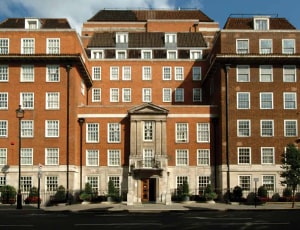
We, The London Clinic family, take pride in our reputation as a multi-disciplined healthcare facility. With skilled nurses and expert consultants, our medical teams are always focused to deliver the best individualized medical care. More than 1,000 nursing, clinical, and support staff are currently working with us to give our patients an extensive range of treatments. We use cutting-edge technologies to ensure a comprehensive range of healthcare services. Not only that, in order to make your stay with us comfortable enough, we equip our patient bedrooms with:
Patients from all over the world fly to us to get their procedures done by our specialist doctors, which is why we also provide our patient's concierge services. Our concierge services include:
The London Clinic has a zero-tolerance policy when it comes to hygiene and cleanliness. Our dedicated housekeeping team cleans every room every day between 8.00 am and 5.00 pm. They are also entitled to supply fresh towels every day and clean the rooms properly between patients.
We also have a day surgery unit based on the third floor at 20 Devonshire Place to make sure a hassle-free surgery as well as post-surgery care for our patients. Our cancer care unit at 22 Devonshire Place is also among our key services.
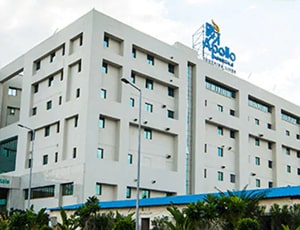
Types of Stem Cell Therapy in Apollo Hospital and its associated cost
| Treatment Option | Approximate Cost Range (USD) | Approximate Cost Range (INR) |
|---|---|---|
| Overall Stem Cell Therapy Cost | 5724 - 8833 | 464524 - 746351 |
| Autologous Stem Cell Therapy | 3438 - 5740 | 278423 - 457463 |
| Allogeneic Stem Cell Therapy | 5596 - 9022 | 464038 - 725456 |
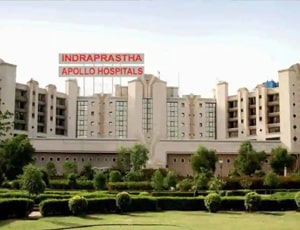
Types of Stem Cell Therapy in Indraprastha Apollo Hospital and its associated cost
| Treatment Option | Approximate Cost Range (USD) | Approximate Cost Range (INR) |
|---|---|---|
| Overall Stem Cell Therapy Cost | 5517 - 9186 | 451270 - 747952 |
| Autologous Stem Cell Therapy | 3397 - 5746 | 273651 - 452809 |
| Allogeneic Stem Cell Therapy | 5591 - 9068 | 468126 - 751436 |
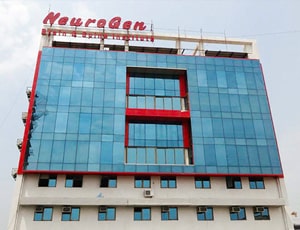
Types of Stem Cell Therapy in NeuroGen Brain and Spine Institute and its associated cost
| Treatment Option | Approximate Cost Range (USD) | Approximate Cost Range (INR) |
|---|---|---|
| Overall Stem Cell Therapy Cost | 4728 - 7541 | 388380 - 610613 |
| Autologous Stem Cell Therapy | 2837 - 4632 | 227098 - 388774 |
| Allogeneic Stem Cell Therapy | 4691 - 7383 | 388324 - 613985 |
Two significant features set stem cells apart from other types of cells. They can proliferate spontaneously into new cells. That is, they renew themselves. And through a process called differentiation, they can develop into other types of cells with distinct functions. Almost all tissues in the body include stem cells. Additionally, they are required for both tissue maintenance and post-injury repair.
The stem cells can differentiate into various tissues depending on where they are located. Hematopoietic stem cells, for instance, are found in the bone marrow and can produce every type of blood cell. Furthermore, stem cells can develop into other cell types such as bone, muscle, brain, or heart cells.
Various types of stem cells exist. The most adaptable stem cells are embryonic stem cells since they can differentiate into any type of fetal cell. Most stem cells in the body are mostly found in tissues and organs, where they may only aid in tissue and organ maintenance and repair. They are less capable of proliferating into new cells. No other body cell possesses an inherent ability to differentiate into new cell types.
What are the different types of Stem cells?
What is the importance of Stem Cells?
The unique characteristics and potential uses of stem cells in research and therapy are the main reasons for their significance.
Depending on the specific objective, the kind of stem cells utilized, and the disease being treated, the process for using stem cells can differ significantly.
The length of time it takes to recover from stem cell operations varies based on the procedure type, the ailment being treated, and personal circumstances. Here is a broad summary of what could be involved in recovery:
Monitoring: Following a stem cell treatment, patients are frequently kept under constant observation in case there are any unanticipated side effects including bleeding, infection, or allergic reactions.
Rest and Observation: To allow for an initial period of healing following surgery, patients may need to refrain from intense activity and rest.
Pain management: Patients may feel pain at the location of administration or at the site where stem cells were taken (bone marrow or adipose tissue, for example). As needed, prescriptions for painkillers may be issued.
Other Symptoms: Patients may have symptoms associated with their underlying condition or the healing process, depending on the type of stem cell treatment being used and the condition being treated.
Short-term recovery: Depending on how invasive the treatment was and how well the patient is doing overall, patients may progressively regain strength and mobility in the days and weeks that follow a stem cell procedure.
Long-term recovery: It may take weeks or months for stem cell therapy to fully show its effects, especially in terms of tissue regeneration or improved disease outcomes. Usually, follow-up consultations with medical professionals are arranged to track improvement.
Rehabilitation: To accelerate healing, build muscle, and maximize functional results, physical therapy or rehabilitation activities may be suggested in specific situations.
Ask your healthcare adviser for the best multiple options and choose the one that meets your expectations
The cost of Stem Cell Therapy in Lithuania may differ from one medical facility to the other. The top hospitals for Stem Cell Therapy in Lithuania cover all the expenses related to the pre-surgery investigations of the candidate. The Stem Cell Therapy cost in Lithuania includes the cost of anesthesia, medicines, hospitalization, and the surgeon's fee. There are many things that may increase the cost of Stem Cell Therapy in Lithuania, including prolonged hospital stay and complications after the procedure.
A stem cell transplant entails several steps for the patient, including:
diagnosis
isolating the adult stem cells
re-administering the cells
post-treatment monitoring and follow-up
Doctors that administer stem cell treatments have actual costs as well. They have overhead expenses, which include Course training, Support personnel, and Admin requirements. In addition, time and experience are necessary to perform the treatment and provide post-operative care. To acquire stem cell sourcing, processing, or delivery technology, the physician may be required to pay license fees.
Since providers want patients to learn the advantages of therapy prior to making a price decision, they seldom publish their costs for stem cell treatments.
Furthermore, stem cell therapies' costs vary depending on the patient's condition, the number of procedures necessary, and the procedure's complexity, making it impossible for medical professionals to provide cost estimates without a diagnostic visit.
Yet, in several circumstances, making treatment decisions primarily on the expense of stem cell therapy is not in the best interests of the patient.
Examining patient outcomes by ailment and comparing the healing process to other surgical and non-surgical treatment choices is the best method to determine whether stem cell therapy is right for you.
There are many hospitals that perform Stem Cell Therapy in Lithuania. For quick reference, the following are some of the leading hospitals for Stem Cell Therapy in Lithuania:
The recovery of the patient many vary, depending on several factors. However, on an average, patient is supposed to stay for about 15 days in the country after discharge. This period is important to conduct all the follow-up tests to ensure that the surgery was successful and the patient can go back to the home country.
There are certain expenses additional to the Stem Cell Therapy cost that the patient may have to pay for. These are the chanrges for daily meals and hotel stay outside the hospital. The per day cost in this case may start from USD 50 per person.
The following are some of the best cities for Stem Cell Therapy in Lithuania:
The patient is supposed to stay at the hospital for about 1 days after Stem Cell Therapy for monitoring and care. The doctors team review the patient's recovery during this time with the help of blood tests and imaging scans. Once they feel that everything is on track, the patient is discharged.
There are more than 1 hospitals that offer Stem Cell Therapy in Lithuania. The above mentioned hospitals have the required infrastructure and a dedicated unit where patients can be treated. Additionally, these hospitals are known to comply with the international standards as well as local legal requirements for the treatment of patients.
Whereas many clinics do not disclose treatment costs, journalists have written on the expense of stem cell-based therapies in nations such as the United States and Canada.
It should be highlighted that a patient cannot determine the effectiveness or safety of a treatment based on these expenditures. However, especially in the case of stem cells and their medical applications, the requisite laboratory studies to ensure a product's safety and efficacy are typically highly expensive, and will inevitably raise the price. If treatment is really affordable, patients should investigate whether the low cost comes with drawbacks in terms of product safety and efficacy.
Stem cell treatment for knees typically costs between USD 3,000 and USD 5,000 per knee. Several factors, including the severity of the knee injury and the nation in which the clinic is situated, can influence the cost.
Stem cell-based treatments for erectile dysfunction in men are believed to cost anything from USD 5,000 to USD 20,000, based on the patient's specific condition.
The stem cell treatment cost for back pain, like spinal injections or disc regeneration injections, can vary from USD 5,000 to USD 7,000. Because traditional treatments can be more expensive than stem cell-based therapy, an increasing number of patients are contemplating stem cell therapy for back pain.
A patient suffering from the consequences of a stroke will have to pay between USD 25,000 and USD 30,000 at European stem cell clinics. It might cost you USD 7,000 to USD 8,000 in countries outside the EU.
Stem cell therapy for a spinal cord injury might cost up to 7,000 dollars.
Patients with hip difficulties are frequently diagnosed with arthritis. The cost of stem cell therapy to improve one's hip condition begins at USD 5,000.
Autologous transplantation can help those who have been diagnosed with:
Amyloidosis
Germ cell tumors (testicular cancer)
Allogeneic transplantation can help people who have been diagnosed with:
Acute leukemia
Amegakaryocytosis or congenital thrombocytopenia
Aplastic anemia or refractory anemia
Chronic lymphocytic leukemia
Familial erythrophagocytic lymphohistiocytosis
Myelodysplastic syndrome of another myelodysplastic disorder
Osteopetrosis
Paroxysmal nocturnal hemoglobinuria
Wiskott-Aldrich syndrome
According to the subtype of the condition and how progressed it is, autologous or allogeneic transplantation can be applied in the treatment of persons with Hodgkin lymphoma, non-Hodgkin lymphoma, or multiple myeloma.
A regenerative stem cell doctor, a specialist who treats patients with stem cell treatment. This type of doctor will most likely be involved in research or clinical trials, identifying novel medicines and their effects, and preventative measures associated with cellular technology to address presently unmanageable human ailments, because this is a relatively new style of medicine.
Stem cells are usually of three kinds:
Embryonic stem cells
Adult stem cells
Stem cells from other organisms
Patients having autoimmune disorders or genetic blood problems can benefit from stem cell therapy, according to a stem cell expert. Pharmaceutical product development in systemic disorders, cardiac and vascular diseases, orthopedic diseases of the spine, or bone marrow transplantation results is also common among stem cell specialists.
A cancer researcher might work with a regenerative stem cell specialist to employ stem cell medicine as an alternative to harmful treatments like radiation and chemotherapy. With tissue grafting, stem cell treatment is also being applied in the treatment of bone, skin, and corneal disorders and accidents.
Educational prerequisites for a Regenerative or Stem Cell Doctor can be a doctorate or a medical degree. A student who wants to work in the interesting area of cell-based regenerative medicine falls in the category of a medical scientist, and they will be at the frontier of modern medical evolution. Of course, achieving such a prestigious profession will necessitate a longstanding interest in learning and ongoing research, which could even necessitate dual graduate degrees contingent on the student's personal objectives; and a willingness to face challenges and the strength of character to cope with missteps as this field of medicine develops.
To be accepted into medical school or a doctoral program, you must have an undergraduate degree from an authorized college. It is best, to begin with, a solid background in biology, chemistry, and biophysics if one's goal is to become a medical scientist and work in the regenerative stem cell medicine field. This can be followed by a master’s degree, and a doctoral degree or post-graduate residency or fellowship.
A regenerative stem cell doctor, a specialist who treats patients with stem cell treatment. This type of doctor will most likely be involved in research or clinical trials, identifying novel medicines and their effects, and preventative measures associated with cellular technology to address presently unmanageable human ailments, because this is a relatively new style of medicine.
Stem cells are usually of three kinds:
Embryonic stem cells
Adult stem cells
Stem cells from other organisms
Patients having autoimmune disorders or genetic blood problems can benefit from stem cell therapy, according to a stem cell expert. Pharmaceutical product development in systemic disorders, cardiac and vascular diseases, orthopedic diseases of the spine, or bone marrow transplantation results is also common among stem cell specialists.
A cancer researcher might work with a regenerative stem cell specialist to employ stem cell medicine as an alternative to harmful treatments like radiation and chemotherapy. With tissue grafting, stem cell treatment is also being applied in the treatment of bone, skin, and corneal disorders and accidents.
Educational prerequisites for a Regenerative or Stem Cell Doctor can be a doctorate or a medical degree. A student who wants to work in the interesting area of cell-based regenerative medicine falls in the category of a medical scientist, and they will be at the frontier of modern medical evolution. Of course, achieving such a prestigious profession will necessitate a longstanding interest in learning and ongoing research, which could even necessitate dual graduate degrees contingent on the student's personal objectives; and a willingness to face challenges and the strength of character to cope with missteps as this field of medicine develops.
To be accepted into medical school or a doctoral program, you must have an undergraduate degree from an authorized college. It is best, to begin with, a solid background in biology, chemistry, and biophysics if one's goal is to become a medical scientist and work in the regenerative stem cell medicine field. This can be followed by a master’s degree, and a doctoral degree or post-graduate residency or fellowship.False